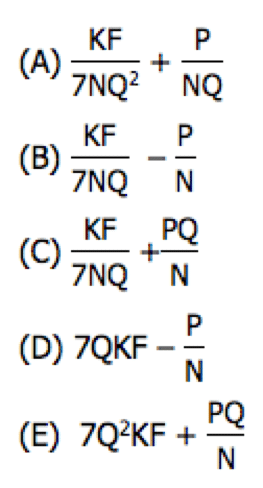Would that you understood this complex form, lest you be confused on GMAT Sentence Correction!
Some of the more difficult GMAT Sentence Correction questions will involve the subjunctive. What is the subjunctive?
Verb Moods
In addition to tenses (past, present, future) and number (singular vs. plural), verbs also have “moods”. English has three verb moods: (1) indicative, (2) imperative, and (3) subjunctive. The indicative is what you probably think of as ordinary English: simple statements of fact. Examples:
The quality of mercy is not strained. (indicative present)
This was the unkindest cut of all. (indicative past)
Birnam wood shall come to Dunsinane. (indicative future)
The imperative mood, not a likely subject for GMAT Sentence Correction, is only used in commands and instructions:
Friends, Romans, countrymen, lend me your ears.
To thine own self be true.
Mend your speech a little, lest it mar your fortunes.
That last quote, Lear‘s words to Cordelia, is a two-for-one: the verb “mend” is in the imperative mood, but the verb “mar” is in the subjunctive mood.
The Subjunctive
When we are talking about plain facts and truths we know for certain, we use the indicative mood. The subjunctive is for everything that’s not so certain. We use the subjunctive to talk about:
1) Counterfactual possibilities—that is, hypothetical possibilities that, at the moment, simply are not true
2) Doubtful possibilities
3) Possibilities in the constructions such as “wish that”, “desire that”, or “lest that”
The Subjunctive for Counterfactual Possibilities
Even if something is not true at the moment, it may be an important possibility to consider. We use the past subjunctive in an “if” clause to discuss such counterfactual possibilities.
If I were you, I would explain the situation to her immediately.
Even if he had a million dollars, he still would complain about not having enough.
If I read six books at once, I would confuse all the plots and characters.
The past subjunctive uses the plural past tense form of the verb. For most verbs, the past tense is the same for singular & plural, but for the form “to be”, the singular past tense (“was”) is different from the plural past tense (“were”). This means, for most verbs, the past subjunctive will be indistinguishable from the past indicative; verb “to be” is the only verb that would reveal the difference.
Doubtful Possibilities
Sometimes we need to plan for things that are unlikely, but that could happen. We use the future subjunctive in an “if” clause to discuss such possibilities.
If I were to win the lottery, I finally would buy a new car.
If I were to learn Sanskrit, I would understand etymology much better.
If he were to be the next Picasso, I would be very happy to have known him for so long.
Notice: the form of the future subjunctive is “were” + the infinitive of the verb.
Wishes, Desires and “Lest”
We use the present subjunctive to express any wish/desire/etc. that is stated in a clause beginning with “that.” We also use the present subjunctive in clauses that follow the word “lest.”
My parents desire that I be famous.
She hopes that she not be chosen for the committee.
He wants to clear his name, lest he lose some of his civil rights.
I study assiduously, lest I do poorly on the GMAT.
These may sound awkward, because fewer than 1% of the population uses these grammatical forms correctly. Notice that the present subjunctive is merely the infinite form of the verb without the “to”; for many verbs, this is identical to the indicative present, but we don’t add an “s” for the third-person singular (he/she/it).
How Does One Learn the Subjunctive?
Since these forms are rarely used, and often used incorrectly, it’s hard to get the correct grammar into your ear. The best way is to read sophisticated material: scholar books, The Economist Magazine, the New York Times. When you are reading works like this, have your antennae up for the subjunctive, and write down in a journal examples you find of it. Over time, you will develop familiarity.
Here’s a free practice SC problem, using some of these ideas:






Leave a Reply